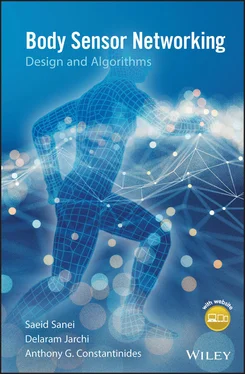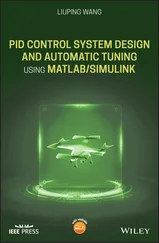Table 3.1 Biosensors, their principle, applications, and bibliography.
| No. |
Type |
Principle |
Applications |
Bibliography |
| 1. |
Glucose oxidase electrode-based biosensor |
Electrochemistry using glucose oxidation |
Analysis of glucose in biological sample |
Clark and Lyons [45] |
| 2. |
HbA1c biosensor |
Electrochemistry using ferroceneboronic acid |
Robust analytical method for measuring glycated haemoglobin |
Wang et al. [52] |
| 3. |
Uric acid biosensor |
Electrochemistry |
For detection of clinical abnormalities or diseases |
Erden and Kilic [53] and Kim et al. [54] |
| 4. |
Acetylcholinesterase inhibition-based biosensors |
Electrochemistry |
Understanding pesticidal impact |
Pundir and Chauhan [55] |
| 5. |
Piezoelectric biosensors |
Electrochemistry |
Detecting organophosphate and carbamate |
Marrazza [56] |
| 6. |
Microfabricated biosensor |
Optical/visual biosensor using cytochrome P450 enzyme |
For drug development |
Schneider and Clark [57] |
| 7. |
Hydrogel (polyacrylamide)-based biosensor |
Optical/visual biosensor |
Biomolecular immobilisation |
Khimji et al. [58] |
| 8. |
Silicon biosensor |
Optical/visual/fluorescence |
Bioimaging, biosensing, and cancer therapy |
Peng et al. [59] and Shen et al. [60] |
| 9. |
Quartz crystal biosensor |
Electromagnetic |
For developing ultrahigh-sensitive detection of proteins in liquids |
Ogi [61] |
| 10. |
Nanomaterials-based biosensors |
Electrochemical or optical/visual/fluorescence |
For multifaceted applications including biomedicine, e.g. diagnostic tools |
Li et al. [62], Kwon and Bard [63], Zhou et al. [64], Guo [65], Hutter and Maysinger [66], Ko et al. [67], Senveli and Tigli [68], Valentini et al. [69], Lamprecht et al. [70], and Sang et al. [71] |
| 11. |
Genetically encoded or fluorescence-tagged biosensor |
Fluorescence |
For understanding biological process including various molecular systems inside the cell |
Randriamampita and Lellouch [72], Oldach and Zhang [73], Kunzelmann et al. [74], and Wang et al. [75] |
| 12. |
Microbial fuel-cell-based biosensors |
Optical |
To monitor biochemical oxygen demand and toxicity in the environment and heavy metal and pesticidal toxicity |
Gutierrez et al. [76] and Sun et al. [77] |
Table 3.2 Use of biosensors in disease diagnosis.
| No. |
Biosensor(s) |
Disease diagnosis or medical applications |
| 1. |
Glucose oxidase electrode-based biosensor and HbA1c biosensor |
Diabetes |
| 2. |
Uric acid biosensor |
Cardiovascular and general disease diagnosis |
| 3. |
Microfabricated biosensor |
Optical corrections |
| 4. |
Hydrogel (polyacrylamide)-based biosensor |
Regenerative medicine |
| 5. |
Silicon biosensor |
Cancer biomarker development and applications |
| 6. |
Nanomaterials-based biosensors |
For therapeutic applications |
1 1 Chen, S., Lach, J., Lo, B., and Yang, G.-Z. (2016). Toward pervasive gait analysis with wearable sensors: a systematic review. IEEE Journal of Biomedical and Health Informatics 20 (6): 1251–1537.
2 2 Lee, T.K.M., Belkhatir, M., and Sanei, S. (2014). A comprehensive review of past and present vision-based techniques for gait recognition. Multimedia Tools and Applications 72 (3): 2833–2869.
3 3 Lee, T.K.M., Sanei, S., and Belkhatir, M. (2011). Combining biometrics derived from different classes of nonlinear analyses of fronto-normal gait signals. IARIA International Journal of Advances on Networks and Services 4 (1–2): 232–243.
4 4 Lee, T.K.M., Belkhatir, M., Lee, P.A., and Sanei, S. (2008). Nonlinear characterisation of fronto-normal gait for human recognition. In: Advances in Multimedia Information Processing – PCM 2008, Lecture Notes in Computer Science (eds. Y.-M.R. Huang et al.), 466–475. Berlin: Springer-Verlag.
5 5 Elbaz, A., Mor, A., Segal, G. et al. (2016). Lower extremity kinematic profile of gait of patients after ankle fracture: a case-control study. Journal of Foot and Ankle Surgery 55 (5): 918–921.
6 6 Ihlen, E.A., Weiss, A., Beck, Y. et al. (2016). A comparison study of local dynamic stability measures of daily life walking in older adult community-dwelling fallers and non-fallers. Journal of Biomechanics 49 (9): 1498–1503.
7 7 Tadano, S., Takeda, R., Sasaki, K. et al. (2016). Gait characterization for osteoarthritis patients using wearable gait sensors (H-Gait systems). Journal of Biomechanics 49 (5): 684–690.
8 8 Chini, G., Ranavolo, A., Draicchio, F. et al. (2017). Local stability of the trunk in patients with degenerative cerebellar ataxia during walking. Cerebellum 16 (1): 26–33.
9 9 Gong, J., Lach, J., Qi, Y., and Goldman, M.D. (2015). Causal analysis of inertial body sensors for enhancing gait assessment separability towards multiple sclerosis diagnosis. In: Proceedings of the 2015 IEEE 12th International Conference on Wearable and Implantable Body Sensor Networks, 1–6. IEEE.
10 10 Rapp, W., Brauner, T., Weber, L. et al. (2015). Improvement of walking speed and gait symmetry in older patients after hip arthroplasty: a prospective cohort study. BMC Musculoskeletal Disorders 16 (1): 291–298.
11 11 Rampp, A., Barth, J., Schülein, S. et al. (2015). Inertial sensor-based stride parameter calculation from gait sequences in geriatric patients. IEEE Transactions on Biomedical Engineering 62 (4): 1089–1097.
12 12 Kwasnicki, R.M., Hettiaratchy, S., Jarchi, D. et al. (2015). Assessing functional mobility after lower limb reconstruction: a psychometric evaluation of a sensor-based mobility score. Annals of Surgery 261 (4): 800–806.
13 13 Pasluosta, C.F., Barth, J., Gassner, H. et al. (2015). Pull test estimation in Parkinson's disease patients using wearable sensor technology. In: 37th Annual International Conference of the IEEE Engineering in Medicine and Biology Society, 3109–3112. IEEE.
14 14 Mariani, B., Jimenez, M.C., Vingerhoets, F.J., and Aminian, K. (2013). Onshoe wearable sensors for gait and turning assessment of patients with Parkinson's disease. IEEE Transactions on Biomedical Engineering 60 (1): 155–158.
15 15 Bagala, F., Klenk, J., Cappello, A. et al. (2013). Quantitative description of the lie-to-sit-to-stand-to-walk transfer by a single body-fixed sensor. IEEE Transactions on Neural Systems and Rehabilitation Engineering 21 (4): 624–633.
16 16 Barth, J., Sünkel, M., Bergner, K. et al. (2012). Combined analysis of sensor data from hand and gait motor function improves automatic recognition of Parkinson's disease. In: 34th Annual International Conference of the IEEE Engineering in Medicine and Biology Society, 5122–5125. IEEE.
17 17 Benson, L.C., Clermont, C.A., Watari, R. et al. (2019). Automated accelerometer-based gait event detection during multiple running conditions. Sensors (Basel) 19 (7): 1–19.
18 18 Li, R.T., Kling, S.R., Salata, M.J. et al. (2016). Wearable performance devices in sports medicine. Sports Health 8 (1): 74–78.
19 19 Simon, S.R. (2004). Quantification of human motion: gait analysis-benefits and limitations to its application to clinical problems. Journal of Biomechanics 37 (12): 1869–1880.
20 20 Jarchi, D., Pope, J., Lee, T.K.M. et al. (2018). A review on accelerometry based gait analysis and emerging clinical applications. IEEE Reviews in Biomedical Engineering 11: 177–194.
Читать дальше












